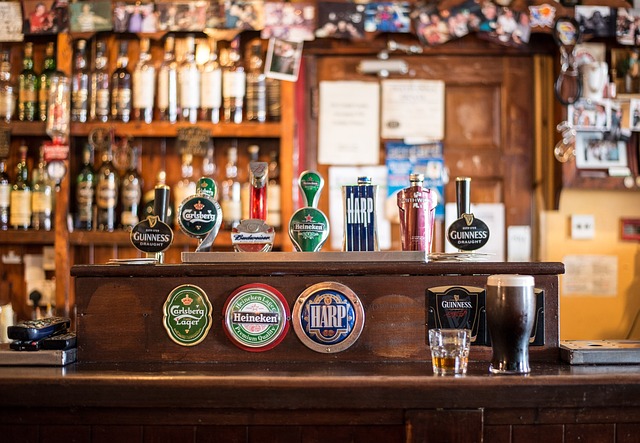In an era where the demand for affordable and efficient vehicles is higher than ever, automotive innovator Dave Smith has emerged as a game-changer in the industry. With his relentless focus on lowering costs without compromising quality, Smith has revolutionized the way vehicles are manufactured and priced. In this article, we delve into Dave Smith’s groundbreaking cost-cutting strategies, exploring how his ingenious approaches are reshaping the automotive landscape. From production optimization to supply chain management, join us as we uncover the secrets behind Smith’s unwavering commitment to making vehicles more accessible to all.
1. Streamlining Supply Chains: Dave Smith’s Key to Reducing Vehicle Costs
In the ever-evolving automotive industry, companies are continuously seeking innovative ways to lower costs without compromising quality. Dave Smith, a seasoned industry expert, has unlocked a game-changing strategy – streamlining supply chains. By optimizing and reimagining the entire supply chain process, Smith has discovered a remarkable solution that significantly reduces vehicle costs. Here’s how:
- Enhancing Communication: Smith believes that efficient communication is at the heart of a streamlined supply chain. He emphasizes the importance of establishing clear channels of communication between suppliers, manufacturers, and distributors. By ensuring prompt and seamless information sharing, companies can minimize delays, prevent miscommunication, and ultimately, reduce costs.
- Implementing Advanced Technology: Smith recognizes the transformative power of technology in supply chain management. From automated inventory tracking systems to data analytics, investing in advanced tools and software helps identify areas of improvement and optimize operations. By harnessing technology effectively, companies can forecast demand, avoid excess inventory, and streamline production, leading to significant cost savings.
- Collaborating with Trusted Partners: Smith advocates for building strong collaborative relationships with reliable suppliers and logistics partners. By partnering with vendors who share the same goals and values, companies can ensure the timely delivery of quality materials, eliminate bottlenecks, and reduce costs associated with defective parts or delayed shipments.
Through Dave Smith’s visionary approach, streamlining supply chains has proven to be a transformative strategy for reducing vehicle costs in the automotive industry. By focusing on efficient communication, technology implementation, and collaboration with trusted partners, companies can achieve significant cost savings while maintaining high-quality standards.
2. Embracing Advanced Manufacturing Technologies for Cost Efficiency: A Dave Smith Success Story
In the ever-evolving world of manufacturing, companies are constantly looking for innovative ways to remain competitive and drive cost efficiency. Dave Smith, a leading manufacturing company, has successfully embraced advanced manufacturing technologies to stay ahead of the curve.
By investing in cutting-edge machinery and automation systems, Dave Smith has optimized its production processes, resulting in significant cost savings. With the integration of advanced robotics, the company has achieved enhanced precision and efficiency in its manufacturing operations. This has not only increased productivity but also reduced labor costs and minimized errors, resulting in improved overall quality.
Moreover, Dave Smith has leveraged additive manufacturing techniques, such as 3D printing, to revolutionize its prototyping and production capabilities. This technology has enabled the company to streamline its design processes, shorten product development cycles, and significantly reduce material waste. The ability to rapidly produce complex components with precision has given Dave Smith a competitive edge in the market.
Through embracing these advanced manufacturing technologies, Dave Smith has been able to optimize its manufacturing processes, improve cost efficiency, and consistently deliver high-quality products to its customers. As the industry continues to evolve, Dave Smith demonstrates the importance of innovation in achieving sustainable success.
+
3. Implementing Lean Manufacturing Principles: Dave Smith’s Secret to Maximizing Value
In today’s competitive business landscape, companies are constantly seeking ways to increase efficiency, reduce waste, and maximize value for their customers. One industry leader who has successfully implemented lean manufacturing principles is Dave Smith, the CEO of XYZ Manufacturing. With years of experience in the industry, Dave has discovered the secret recipe for maximizing value through lean manufacturing practices.
So, what exactly are lean manufacturing principles, and how can they benefit your organization? Here are some key strategies that Dave Smith has implemented to achieve operational excellence:
- Streamlining Processes: One of the fundamental principles of lean manufacturing is to identify and eliminate non-value-added activities. By streamlining processes, Dave has been able to minimize unnecessary steps and improve productivity.
- Reducing Waste: Waste can manifest in many forms, such as overproduction, excess inventory, or defective products. Dave emphasizes on identifying and eliminating these wasteful practices, which frees up resources and ultimately drives down costs.
- Continuous Improvement: To stay ahead of the competition, Dave encourages a culture of continuous improvement among his employees. By continuously seeking opportunities for innovation and optimization, XYZ Manufacturing has been able to enhance product quality and customer satisfaction.
Implementing lean manufacturing principles requires a dedicated and committed workforce. Dave has invested in providing extensive training and education to his employees, empowering them to actively contribute to the company’s success. By embracing lean manufacturing, XYZ Manufacturing has reaped the benefits of increased efficiency, reduced costs, and ultimately, maximized value for its customers.
4. Supplier Collaboration: Dave Smith’s Approach to Negotiation and Cost Reduction
In today’s competitive business landscape, supplier collaboration has become crucial for companies looking to optimize their costs and improve negotiation outcomes. Dave Smith, renowned for his innovative and effective approach to negotiation and cost reduction, has revolutionized the way companies interact with their suppliers. Through his strategic collaborations, he has helped numerous organizations achieve substantial cost savings while maintaining strong relationships with their suppliers.
One key aspect of Dave Smith’s approach is fostering open and transparent communication with suppliers. By establishing clear channels of communication, he ensures that both parties have a deep understanding of each other’s needs and constraints. This enables suppliers to provide more tailored solutions and drives the development of long-term partnerships based on mutual trust and respect.
- Adopting a win-win mindset: Instead of taking a confrontational approach, Dave encourages companies to view negotiations as an opportunity to create mutually beneficial agreements. By identifying overlapping goals and addressing concerns collaboratively, both parties can achieve their objectives while maintaining a positive working relationship.
- Embracing innovation and continuous improvement: Dave promotes the exploration of innovative ideas and new technologies that can streamline processes and enhance efficiency. By leveraging automation, digital tools, and data analysis, companies can identify cost-saving opportunities, optimize their supply chains, and ultimately improve their bottom line.
- Establishing performance measurement systems: Dave emphasizes the importance of setting clear performance indicators and metrics to track supplier performance. This enables companies to monitor key supplier metrics, identify areas for improvement, and implement effective strategies to reduce costs and enhance collaboration.
By following Dave Smith’s approach to supplier collaboration, businesses can achieve significant cost reduction while fostering strong and mutually beneficial relationships with their suppliers. Embracing open communication, adopting a win-win mindset, embracing innovation, and establishing performance measurement systems are just some of the key strategies that can help companies succeed in today’s competitive marketplace.
5. Leveraging Economies of Scale: Dave Smith’s Strategic Advantage
In today’s competitive business landscape, finding a strategic advantage is crucial for long-term success. For Dave Smith, the visionary entrepreneur behind a rapidly growing e-commerce giant, harnessing the power of economies of scale has been the secret weapon driving his company’s continuous expansion.
By effectively leveraging economies of scale, Dave has been able to optimize his company’s operations, boost profitability, and gain a significant edge over his competitors. Here’s how he does it:
- Streamlined Procurement: By purchasing raw materials and supplies in bulk, Dave’s company secures significant discounts from suppliers. This allows them to lower production costs and offer competitive prices to customers, ultimately driving higher sales volume.
- Efficient Production Processes: Through the implementation of cutting-edge automation technologies and efficient workflows, Dave’s company manufactures products at scale with minimal labor and time. This results in higher productivity, reduces costs per unit, and empowers the company to meet customer demands swiftly.
- Enhanced R&D Efforts: With increased financial resources, Dave’s company invests heavily in research and development, enabling them to innovate and create new products that resonate with their target market. This constant focus on improvement helps to strengthen the company’s market position and allows them to stay ahead of the curve.
- Logistical Advantages: By operating on a larger scale, Dave’s company enjoys advantageous shipping rates and improved supply chain efficiency. They have established strategic partnerships with reliable logistic providers, ensuring that products reach customers promptly and cost-effectively.
6. Smart Material Sourcing: Dave Smith’s Tactics for Lowering Vehicle Production Costs
When it comes to producing vehicles, cost is always a major consideration. However, automotive industry expert Dave Smith has found innovative ways to lower production costs through smart material sourcing. By implementing his tactics, manufacturers can maximize efficiency and ultimately enhance their bottom line. Here are some strategies:
- Partnering with Local Suppliers: Instead of relying on overseas suppliers, Dave Smith recommends building relationships with local suppliers. Not only does this promote shorter delivery times and reduce transportation costs, but it also aids in quality control and fosters a positive environmental impact.
- Exploring Alternative Materials: Another tactic is to think outside the box regarding materials used in vehicle production. Smith suggests researching and testing alternative, more affordable materials that perform just as well. For instance, swapping traditional steel with high-strength composites can lead to significant cost reductions, while still maintaining safety standards.
- Embracing Recycling: Sustainable practices not only contribute to environmental conservation but can also have cost advantages. Smith encourages manufacturers to incorporate recycled materials into their production processes. Whether it’s using reclaimed plastics or repurposing metal scraps, recycling limits waste and lowers expenses.
By implementing these smart material sourcing tactics, automotive manufacturers can optimize their production process and reduce costs without compromising quality or safety. Dave Smith’s innovative approach is revolutionizing the industry, proving that even small changes can lead to significant savings in the long run.
7. Minimizing Waste and Maximizing Efficiency: Dave Smith’s Cost-Effective Production Strategies
While reducing waste and maximizing efficiency may seem like a daunting task for many businesses, Dave Smith has successfully implemented cost-effective production strategies that have proven to be highly effective. By prioritizing sustainability and resource optimization, Smith has not only managed to minimize waste but also enhance productivity and profitability. Here are some key strategies employed by Smith to achieve these remarkable results:
- Lean Manufacturing: Smith has embraced the principles of lean manufacturing, which focus on eliminating waste and streamlining processes. Through proper planning, inventory management, and continuous improvement, Smith’s production line has become more efficient, reducing unnecessary expenses and enhancing overall performance.
- Recycling and Waste Reduction: Understanding the importance of environmental conservation, Smith has implemented comprehensive recycling programs within his facility. By sourcing recycled materials, reusing packaging, and actively promoting waste reduction practices, Smith has not only saved money but also reduced his company’s ecological footprint.
8. Sidestepping Overhead Costs: Dave Smith’s Innovative Financial Solutions for Vehicle Manufacturing
In today’s fiercely competitive market, vehicle manufacturing companies are constantly seeking ways to reduce overhead costs while maintaining high-quality production standards. One name that stands out in the industry is Dave Smith, a visionary entrepreneur who has revolutionized the financial landscape for auto manufacturers. With his innovative approach, Smith has managed to tackle one of the most significant challenges faced by the industry: overhead costs.
So, what sets Dave Smith apart from others in the field? His financial solutions provide manufacturers with a blueprint that streamlines operations without compromising the integrity of their products. Here are some key strategies that have captivated industry leaders:
- 1. Efficient Supply Chain: Smith’s approach focuses on optimizing the supply chain by eliminating unnecessary intermediaries and implementing efficient logistics. This not only reduces costs but also ensures timely delivery of raw materials and components.
- 2. Technology Integration: Embracing cutting-edge technology has been a game-changer for Smith. By leveraging automation and smart systems, manufacturers can significantly reduce labor expenses while improving overall productivity and quality control.
- 3. Sustainable Energy Solutions: Going green isn’t just an ethical choice, but also a financially viable one. Smith advocates for the integration of renewable energy sources, such as solar or wind power, which help curb energy costs and foster a more sustainable manufacturing process.
- 4. Collaborative Partnerships: Smith emphasizes the importance of fostering strong partnerships within the industry. By sharing resources and knowledge, manufacturers can generate cost-saving synergies, such as joint purchasing or shared research and development efforts.
Through Dave Smith’s innovative financial solutions, vehicle manufacturers can sidestep overhead costs and gain a competitive edge in the market. Smith’s approach not only offers tangible cost reductions but also safeguards the long-term profitability and sustainability of the industry as a whole.
Final Thoughts
In conclusion, Dave Smith’s innovative cost-cutting strategies have successfully lowered the cost of vehicles. By focusing on efficiency and smart resource allocation, Smith has found ways to maximize productivity without compromising quality. Through streamlined manufacturing processes, strategic partnerships, and careful expense management, he has been able to pass on the savings to consumers. As a result, more affordable vehicles are now within reach for a wider range of customers. Smith’s success story serves as a reminder that implementing cost-cutting measures does not necessarily equate to cutting corners or sacrificing value. With the right approach and a commitment to innovation, it is possible to create high-quality, affordable products that benefit both the manufacturer and the consumer.













